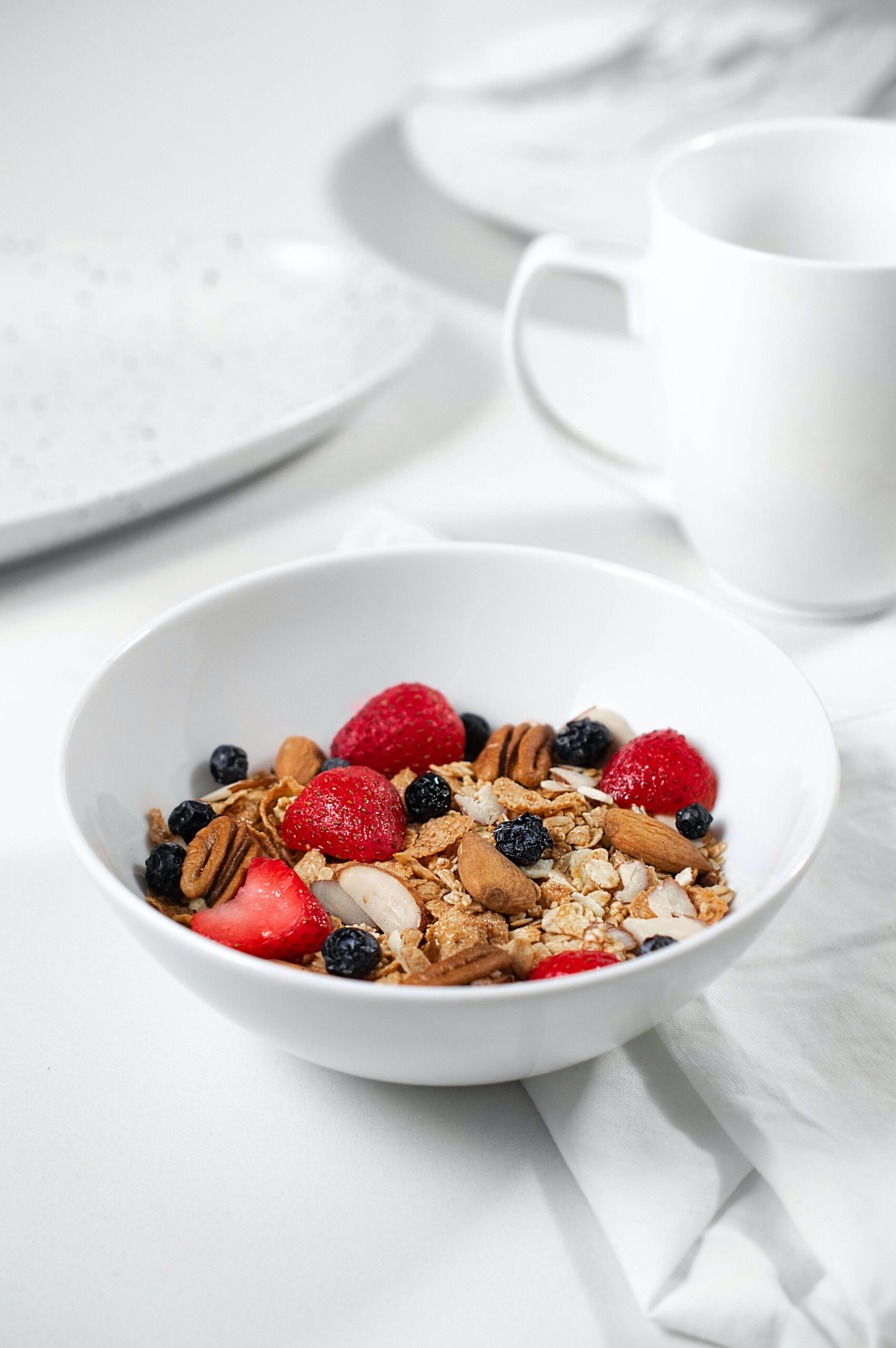Discover 4 Ways To Combat Inflammation
Did You Know?
Inflammation is a natural biological process that can be triggered by multiple factors like pathogens, toxins, or damaged cells. These factors can either be infectious or non-infectious and both lead to the development of either acute or chronic inflammation. Acute inflammation is an immediate process while chronic inflammation is a prolonged process linked to the development of some chronic diseases. Intended as a defense mechanism, inflammation is a vital part of a healthy body and proper resolution creates healed tissue and minimized injury or infection.
All inflammatory processes are characterized in 4 steps:
1) Cell receptors recognize a harmful stimulus
2) Inflammation is activated
3) Inflammatory markers are released
4) Inflammatory cells respond
The goal of inflammation, no matter the cause is a resolution and return to homeostasis. Continue reading to discover 4 ways to combat excess inflammation and why it is important to do so

Why Combat Inflammation?
Inflammation is a natural part of the body’s defense and allows the system to engage in a pro-inflammatory way to destroy the threat, and an anti-inflammatory way to allow healing and restoration. A chronic pro-inflammatory phase is dangerous because it not only destroys the threat but also destroys healthy tissue which is defined as an autoimmune disease. When the body is unable to regulate the inflammation, the risk of disease increases, the probability of healing decreases, and overall health declines. The best preventative measure against this is practicing healthy habits like reducing stress and eating antioxidant-rich foods. These two practices are important because combating inflammation is a consistent practice and commitment. Continue reading to discover inflammation through 2 categories: acute and chronic

Acute Inflammation
Acute inflammation is a vital part of a healthy body because this is how the body addresses a threat, whether infectious or non-infectious. The initiation of inflammation is generally meant to last a few days and becomes chronic if it lasts from 2-6 weeks. Once the inflammation continues to persist past this time frame, tissue damage becomes inevitable. Researchers describe this balance as critical so that the beneficial aspects of pro-inflammation can readily transition into anti-inflammation. For example, in heart disease, inflammatory mediators have been linked to the events leading to a heart attack. These mediators become elevated during initial cardiac stress until ruptured plaque results in a heart attack. One study found that the suppression of inflammation is when cardiac tissue can repair. Another representation of the purpose of acute inflammation is in the setting of exercise, where inflammation is the byproduct of muscular stress and exertion. In this case, exercise-induced muscle damage results in the accumulation of leukocytes (a type of inflammatory cell) about 3 hours post-exercise, dependent on muscle damage. One study found that acute inflammation is necessary but must be strictly regulated to allow for muscle regeneration.

Chronic Inflammation
One of the biggest reasons to combat inflammation is to prevent chronic disease. This relates to the fact that inflammation is meant to be initiated and resolved under specific circumstances. When inflammation becomes chronic, the dysregulation of inflammatory markers is linked to autoimmune disease, metabolic disease, and cancer. For example, cytokines are small proteins that conduct signaling between cells during the inflammation process. Research has found that excessive cytokine production can lead to tissue damage and organ failure. Research also supports that abnormal inflammatory enzymes play a role in inflammation-related diseases like heart disease and cancer.
For example, one of the underlying causes of heart disease in atherosclerosis is plaque within vascular walls. The manifestation of a heart attack occurs from ruptured plaque occluding the vessels in the heart. Since cardiac stress first manifests as inflammation, cell mediators play a role in preventing extensive injury. One study has discovered that one inflammatory factor called C-reactive protein can be an indicator of the risk of vascular events, both occurrence, and recurrence. The study also supported that an increase in this inflammatory factor is associated with other diseases like the risk of stroke and carotid vessel disease.
Another representation of the damage of chronic inflammation is in bowel diseases, which are also linked to a dysregulation of the inflammatory response. One study found that inflammatory bowel diseases like ulcerative colitis and Crohns with an unknown origin were cytokine driven. The study concluded that this bowel disease was the result of a malfunctioning between gut flora and the immune system.

What Should You Do About It?
First talk to your doctor about your specific case. Especially if you take medications or have a specific medical history. The best way to combat inflammation is through lifestyle changes like diet habits, exercise, and smoking cessation. However, some inflammatory diseases could be due to age like arthritis or genetic factors like auto-immune diseases. The complexity of the human body may not allow for one solution because some people need anti-inflammatory drugs like steroids or NSAIDs to reduce symptoms. Nonetheless, eating a diet rich in anti-inflammatory foods like whole grains, vegetables, and fruits while avoiding processed foods and refined sugars is the best way to improve and support a healthy lifestyle.

Combat Inflammation in 4 Ways
1. Eat anti-inflammatory foods
Anti-inflammatory foods are the best preventative method against chronic inflammation. Remember, acute inflammation is a normal body process against pathogens and stress. However, chronic inflammation is what becomes problematic because it increases the risk of chronic disease. Discover anti-inflammatory foods here, here, and here
2. Reduce stress
It is important to reduce stress because prolonged stress results in prolonged inflammation. Research has proved that prolonged and chronic stress results in an increased risk of physical, psychiatric, and other stress-related diseases like heart disease, liver disease, hypertension, depression, and Alzheimer’s. Therefore, reducing stress can be done in multiple ways like meditation, journaling, exercise, listening to relaxing music, and counseling.

3. Get good sleep
A proper night’s sleep is one essential part of a healthy lifestyle. The CDC recommends adults need between 7-8 hours of sleep a night so the body can repair, heal, restore, and rebalance systems. Studies have linked improper sleep to a risk of chronic diseases like diabetes, obesity, and depression.
4. Practice Muscle recovery
Practicing muscle recovery is important especially if you train strenuously and consistently. Exercise is a form of stress on your body and even though it is acute and positive stress, it still requires adequate recovery for muscles to heal, recover, and rebuild. Practicing recovery will also help training be effective without the risk of injury.

How To Make It SMART
SHORT- Commit to including multiple habits to combat inflammation. Explore meal recipes, get good sleep, practice mediation, and get a massage. Commit to taking care of your health before you are forced to
MEASURABLE- These habits are a part of an overall healthy lifestyle. If you want to improve your sleep, track your sleeping habits, use lavender, drink chamomile tea, and assess how you feel after implementing an intentional sleep routine
ATTAINABLE- Taking care of your body to combat inflammation should be a consistent and frequent practice
REASONABLE- It will be possible to implement through consistency and intentionality. If you don’t know where to start, pick one habit and commit to that for 30-60 days. The process will become easier as you feel better and become empowered in transforming your health
TIMELY- Commit to including a stress-relieving habit in your life for 30-60 days. Assess how you feel and then commit to adding another habit. Commit to creating a life that supports a healthy you.
As always,
Love yourself in health, one day at a time



